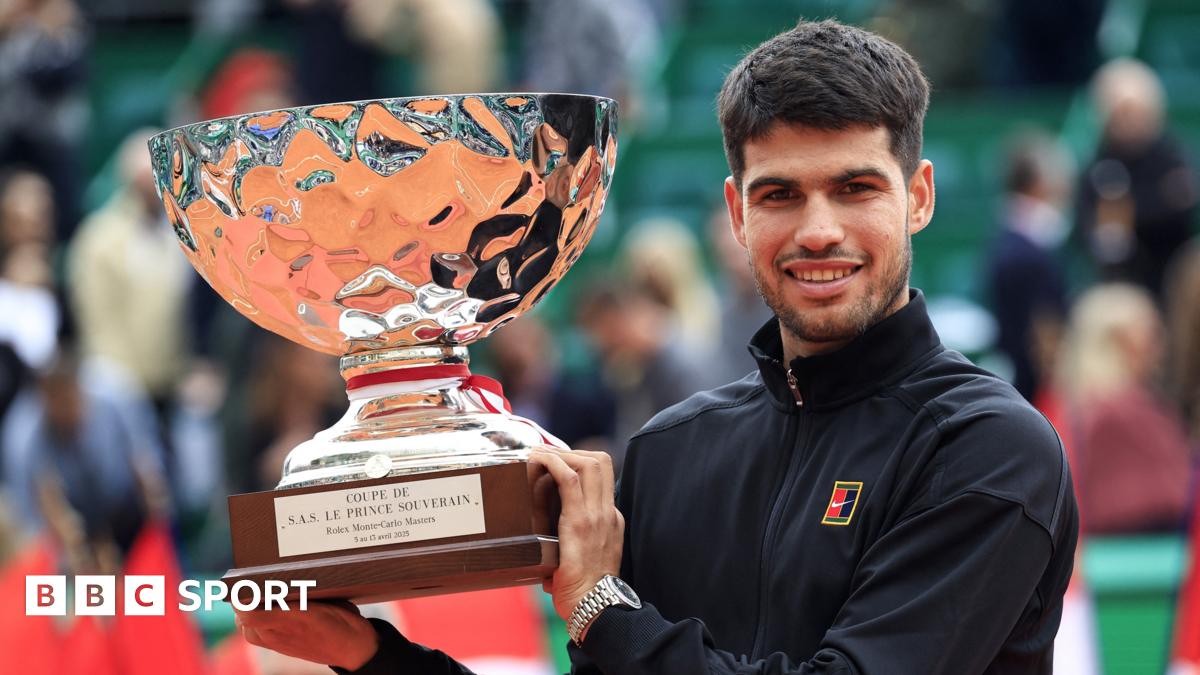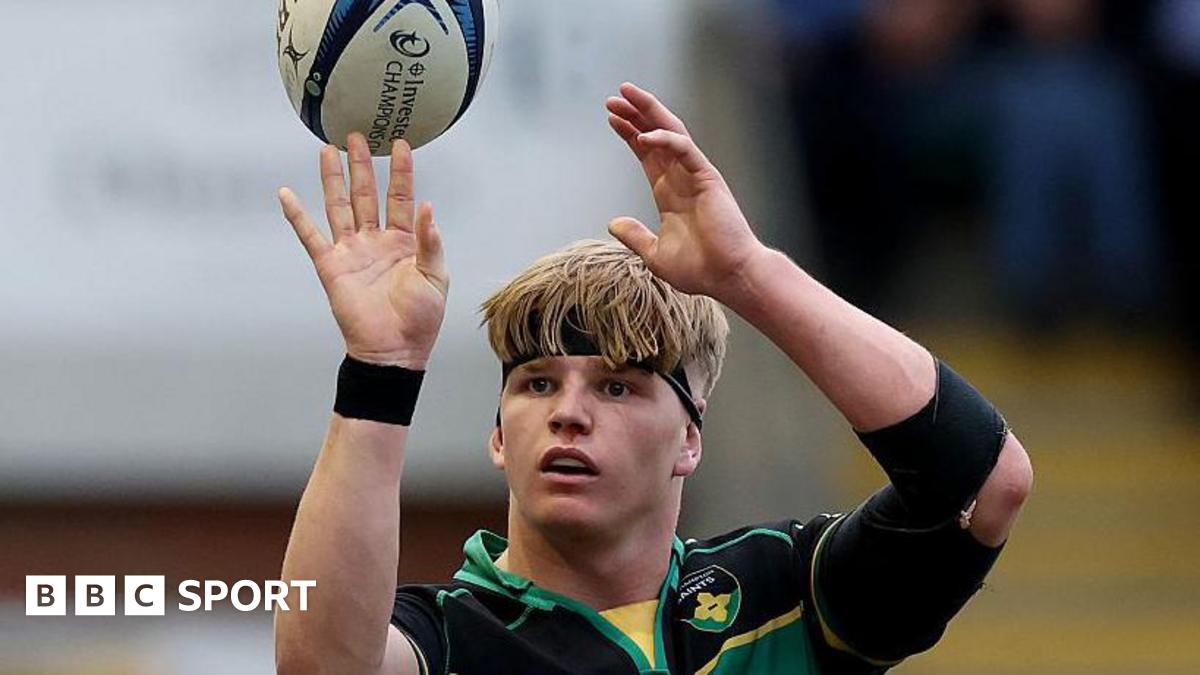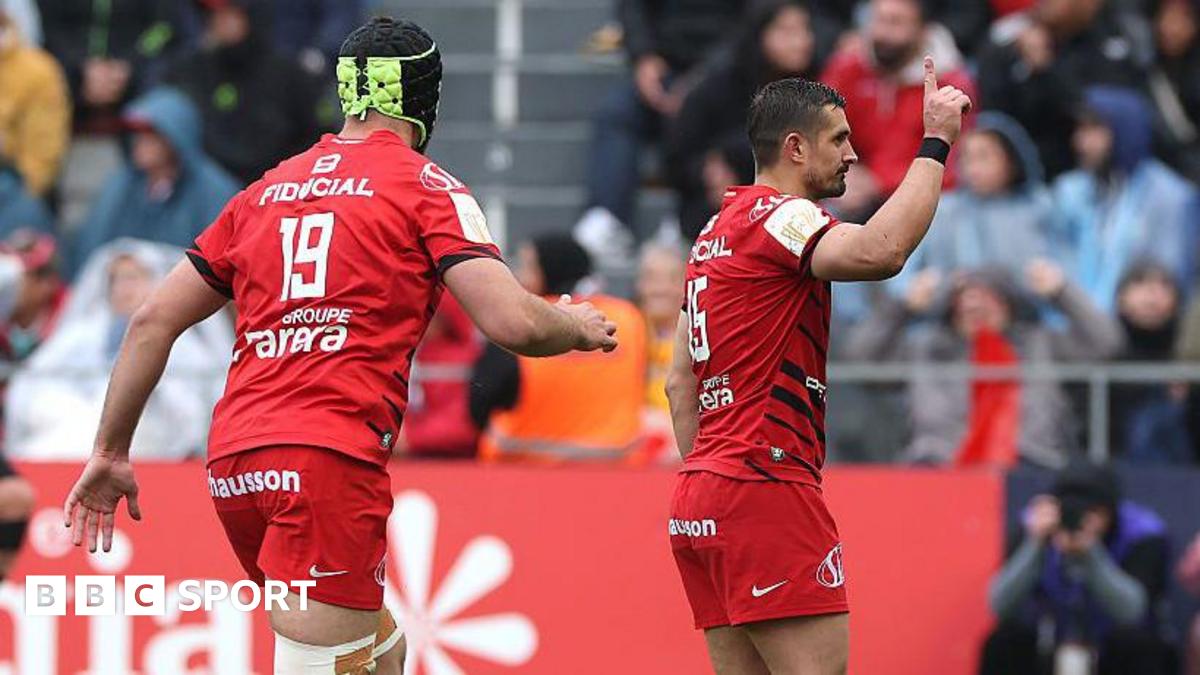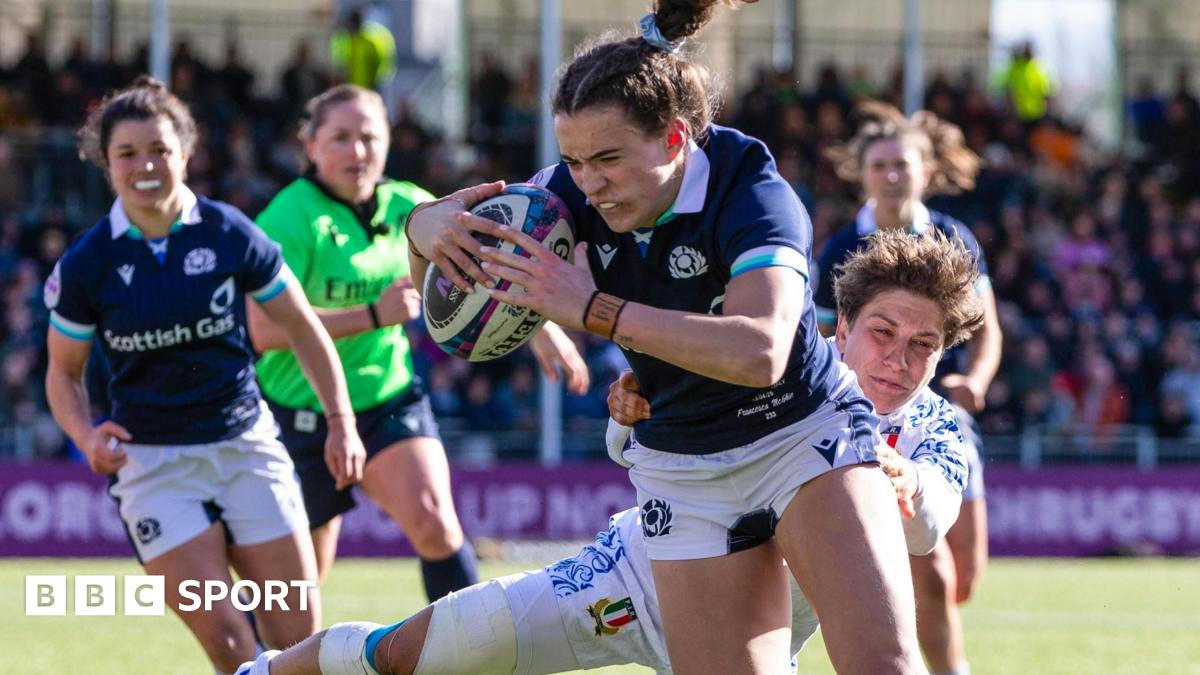I Dig Sports

Alcaraz, as he has done for most of the week, made a wayward start.
An early break lead was cancelled out by Musetti, who reeled off four games in a row as Alcaraz sprayed errors off his forehand.
Musetti's accuracy won out over his opponent's pacy hitting, with the Italian clinching the set on an outrageous drop-shot winner from behind the baseline.
Alcaraz hit 14 unforced errors in the first set, 11 off the forehand alone, but settled quickly into the second.
A roar of "vamos" greeted a missed Musetti forehand that handed Alcaraz the break lead, with the Spaniard moving around the court with more conviction and asking the crowd for appreciation after hitting a superb backhand winner.
He won five games in a row but Musetti had a glimmer of a chance. He created five break-back points as Alcaraz served for the set, but the second seed saved them all, ultimately closing out an eight-minute game to force a deciding third set.
That was barely competitive, though, as Musetti was hindered by a right thigh injury, needing treatment after going 3-0 down, and could barely move.
Alcaraz promptly whizzed through the set, raising his arms in celebration before consoling Musetti.
The victory also means Alcaraz will replace Germany's Alexander Zverev as world number two when the rankings are updated on Monday.
Later, British pair Julian Cash and Lloyd Glasspool were beaten 1-6 7-6 (10-8) 10-8 in the men's doubles final by home favourite Romain Arneodo and France's Manuel Guinard.
Everything you need to know: ITTF Mens and Womens World Cup Macao 2025

When and where?
The Galaxy Arena, Macao will be lit up with table tennis action from Monday 14th April to Sunday 20th April. Stay updated with the results throughout the event on the event page.
Who will be playing and who to watch out for?
The tournament features a field of 48 players per event, promising intense action from start to finish. The full player list is available here.
World number one Lin Shidong leads the mens field alongside compatriot Wang Chuqin, whilst defending womens champion Sun Yingsha returns to defend her crown with fellow Chinese stars Wang Manyu and Wang Yidi all in contention.
The international challenge is headlined by Japans Tomokazu Harimoto in the mens event and teenage sensation Miwa Harimoto in the womens competition, stars like Brazilian Hugo Calderano, Frances Felix Lebrun, Romanias Bernadette Szocs and Puerto Ricos Adriana Diaz are among the lineup looking to challenge for the title.
With Stage 1 Draw completed, the stage is set for exciting matchups. View the full draw results here.
Whats at stake?
On top of the prestigious Evans and Hammarlund Cup, there is a share of a USD 1,000,000 prize pool to be won.
What is the playing system?
The tournament will be split into two stages, with players split into 16 groups of three in Stage 1. The top 4 seeds are automatically placed in Groups 1 to 4 and the remaining players will be drawn into the groups. Matches in Stage 1 will consist of four games, with final rankings based on win-loss ratios. The winner of each group will qualify for Stage 2 which will consist of a knockout draw.
For a more detailed breakdown of the playing format, click here.
Where to watch?
Here are the broadcasters list for the ITTF Mens & Womens World Cup 2025:
The event will also be livestreamed on ITTFs YouTube Channel.
Enhanced Table Tennis Review System to Feature at ITTF Mens and Womens World Cup Macao 2025

The International Table Tennis Federation (ITTF) is rolling out an enhanced version of the Table Tennis Review (TTR) system at the ITTF Mens and Womens World Cup Macao 2025, following the successful implementation on the last day of the Mixed Team World Cup Chengdu 2024, reinforcing its commitment to fairness, accuracy, and innovation in officiating.
The TTR system, comparable to video review technologies used in other global sports, enables players to challenge umpire decisions on selected contentious points. Using state-of-the-art ball tracking and instant replay tools, the system ensures greater precision in critical match situations.
Key Features of the TTR System
Each player is granted two reviews per match. A successful or inconclusive challenge retains the review count, while an unsuccessful one results in the loss of a review. To assess challenges, TTR Match Officials analyse footage using multiple camera angles and replay speeds before determining whether to uphold or overturn the original decision.
The following scenarios are eligible for review:
-
Edge ball
-
Service net
-
Service toss height (minimum 16 cm)
-
Service toss angle (maximum 30 degrees)
-
Ball visibility during service (ball hiding)
-
Service toss below the playing surface
-
Service toss inside the playing surface
-
Obstruction
Should a review be inconclusive, the on-court umpires original decision will stand.
The implementation of the improved TTR system in Macao continues the ITTFs drive to enhance transparency and consistency in officiating, giving athletes greater confidence in the fairness of competition and offering fans a closer look at the intricacies of the game.

"We will be buzzing for that game and we will build for it.
"Many people will probably write us off but I promise you we'll go there and put up a fight."
Pollock has enjoyed a stellar rise in his breakthrough season after making his Champions Cup debut last December before winning his first Test cap in England's final Six Nations game with Wales.
The exuberant back row scored two second-half tries before pointing at the home crowd and imitating a basketball shot in celebration during Northampton's dominant win over Castres, but Saints' director of rugby Phil Dowson said he does not want to diminish his young starlet's personality.
"It's great when he is on your side and you want that character and for people to be themselves," said Dowson.
"I watched Leinster's game last night and it was incredibly impressive. Glasgow are a very good side and are URC champions, but they [Leinster] were ruthless.
"Clearly they have world class talent in the group and are playing well, but they are the challenges we have signed up for and want to enjoy."
Last-gasp Ramos penalty puts Toulouse into semi-finals

Toulon: Jaminet: Drean, Fainga'anuku, Sinzelle, Villiere; Garbisi, Serin; Priso, Baubigny, Gigashvili, Ribbans (capt), Alainu'uese, Ludlam, Abadie, Isa.
Replacements: Ivaldi, Gros, Setiano, Rebbadj, Le Corvec, White, Domon, Tolofua.
Toulouse: Ramos; Mallia, Barassi, Ahki, Kinghorn; Ntamack, Graou; Baille, Marchand (capt), Aldegheri, Flament, Meafou, Cros, Willis, Roumat.
Repacements: Mauvaka, Neti, Merkler, Verge, Jelonch, Saito, Costes, Lebel.
Referee: Matthew Carley (England)

Scotland: Rollie; Lloyd, Orr, Thomson, McGhie; Nelson, Brebner-Holden; Young, Skeldon, Clarke, Bonar, Boyd, Malcolm (capt), McLachlan, Gallagher.
Replacements: Martin, Bartlett, Poolman, Ferrie, Konkel, Stewart, Mattinson, Scott.
Italy: Ostuni Minuzzi; Muzzo, Sillari, Rigoni, D'Inca; Stevanin, Stefan; Turani, Vecchini, Seye, Tounesi, Duca, Sgorbini, Veronese, Giordano (capt).
Replacements: Spinelli, Stecca, Maris, Fedrighi, Ranuccini, Bitonci, Madia, Mannini.
Referee: Aimee Barrett-Theron (SA)
TMO: Rachel Horton (Aus)

MECHANICSBURG, Pa. Fridays sprint car show at Williams Grove Speedway will honor its original winner. He was the first. He had one of the most recognizable names in motorsports history dating back to the 1930s.
On tap at Williams Grove on Friday will be the annual Tommy Hinnershitz Memorial Spring Classic, honoring the late, great racer from Oley that holds the distinction of winning the first race held at Williams Grove Speedway back on Sunday, May 21, 1939.
Hinnershitz won the race in what was called a hard and heady event to best the famed Joie Chitwood.
Hinnershitzs death in 1999 left behind an auto-racing legacy worthy of note by any standards.
During his 30-year career spanning 1930-1960, The Fying Dutchman, as he was known, amassed seven AAA/USAC Eastern Big Car Championships, taking titles in 1949, 1950, 1951, 1952, 1955, 1956 and in 1959.
He had garnered 103 AAA/USAC feature wins with 19 taking place at Williams Grove.
Hinnershitz set 43 AAA track records during his tenure and would compete in three Indianapolis 500s. At the time of his death, the 87-year-old was ranked second behind Steve Kinser on the National Sprint Car Hall of Fames Top Sprint Car Drivers of All Time list.
Back in 1939, when Hinnershitz passed Chitwood for the lead in that maiden race at Williams Grove, the duel was billed as one of the most thrilling bits of driving ever witnessed on a Pennsylvania speedway.
It was said that when Hinnershitz passed Chitwood, the Big Chief was met with acclaim from the crowd.
And Williams Grove will bestow even more worthy acclaim in the Big Chiefs honor this Friday night.

HOLLEY, Mich. As the Must See Racing Sprint Series presented by Perfit-Parts.Com prepares for its 16th consecutive season, its full-speed ahead.
Things are certainly different than they were in 2010. The racing landscape has dramatically changed. Must See Racing was founded prior to 2010 by Jim and Nancy Hanks. Hanks didnt necessarily want to be the owner of a winged asphalt sprint car series, but it was necessary to fulfill national television commitments they were involved in at the time.
Hanks had ventured into the national television world and was producing open-wheel events for FOX Sports and among them the prestigious Little 500 and winged asphalt sprint car races. The two series he was working with didnt see eye-to-eye on many key issues. Instead of trying to get the two series on the same page, he created his own series.
The day we started this I didnt envision wed be talking about it 16 years later, Hanks said.
In recent years, Hanks has added a 602-crate engine feeder system, Midwest Lights Series, to his Must See Racing umbrella, further increasing his workload.
There have been several issues Hanks has had to navigate around over the past 16 years. Tracks are slowly disappearing, the car count pool continues to shrink due to costs, and getting sustainable purses from promoters is always a challenge.
At 77 years of age, one would think owning and operating a sprint car series would be the least of Hanks interests. But he enjoys the day-to-day operations of managing such a venture, and believes it keeps him active.
I dont feel any different today than the day I started it. I have a couple physical restraints as I get older, Hanks said. Im enjoying it as much today as the day I started it. My enthusiasm for our sport, our series, and everybody involved in it hasnt dwindled one bit.
Its changed a lot since day one. The biggest change is how we reach the fans. I guess when we started the focus was people in the grandstand, and of course that hasnt changed. The biggest change is how we attract fans through multimedia. Network television in the beginning was very expensive. If you werent on network television, you werent leading the competition. Today with live streaming and the various ways we can reach people through social media, thats the biggest change.
This season is expected to be the biggest yet, but it wont come without challenges.
I guess comparing today to the day we started, the pool of cars is definitely smaller. Theres no question about that. However, were very fortunate, Hanks said. Weve got teams from all over the county and Canada committed to race with us. The competition has always been tough. But its really strong right now.
Hanks is set to pay out a record amount of prize money in 2025. Three $10,000-to-win events highlight the schedule. Instead of a year end points fund, teams will receive the same money in the form of attendance bonuses paid out at select times during the season, putting money in their pockets when its most needed.
Must See Racing puts fans in the grandstands. The entertainment value is there. Promoters are able and willing to put more money in the purses to have us at their race tracks, Hanks said. Weve always had a points fund. It enables race teams to travel a little more. The cost to travel for the teams is the biggest hurdle. The cost of fuel and hotels create additional costs.
This year we have 11 national events and eight Midwest Lights events. Six of those are combined shows. But we will be racing at 10 tracks in five states.
Hanks credits his wife for a lot of the success of the series.
Nancy and I met at age 15 and married at 21. Were not only husband and wife, but were also best friends, Hanks said. Shes been my biggest supporter in anything Ive ever done. She knows the business. Shes a big part of what Im able to do. Shes not a big fan of racing politics, but she sticks with it and has never wavered one bit. She stays in the background. If she ever comes to me and says she lost interest and tired of it, well be done, and well walk away together.
The success of this series is faith based and staying on the high road and not allowing the market from year-to-year bump us around is key. Im very proud of the fact our three founding principles have never changed or wavered. Safety has never changed or wavered, making the racing as affordable as possible for the race teams, creating a level and competitive playing field, and Im proud of the fact we havent changed these principles since day one.
The Must See Racing season begins May 17 at Lancaster (N.Y.) Motorplex.

Tampa Bay Lightning forward Oliver Bjorkstrand is considered week-to-week with a lower-body injury, head coach Jon Cooper announced Sunday.
Bjorkstrand, who will be sidelined into the playoffs, sustained the injury during Tampa Bay's 4-3 overtime loss to the Detroit Red Wings on Friday.
"It's tough because he's really grown into his role with us, and hopefully we'll have him back for the playoffs at some point," Cooper said of Bjorkstrand.
Bjorkstrand, 30, has nine points (five goals, four assists) in 18 games with the Lightning since the club acquired him from Seattle prior to the NHL trade deadline. He recorded 37 points (16 goals, 21 assists) in 61 games with the Kraken in 2024-25.
A third-round pick by Columbus in the 2013 NHL Draft, Bjorkstrand has totaled 384 points (172 goals, 212 assists) in 624 career games with the Blue Jackets, Kraken and Lightning.

Birmingham City were dealt a shock 2-0 defeat by Peterborough United in the Vertu Trophy final at Wembley Stadium on Sunday, with NFL legend and minority owner of the club Tom Brady watching on.
Birmingham, having already clinched the League One title, were expected to wrap up a momentous double in the Vertu Trophy, a competition which is largely comprised by teams in English football's third and fourth tiers.
However, they were brushed aside by the unfancied Peterborough, who are 16th in League One with 47 fewer points than Birmingham.
Harley Mills opened the scoring after 15 minutes with a sublime free-kick before another stunning strike -- from captain Hector Kyprianou -- doubled Peterborough's advantage.
While Birmingham had 75% possession, they could not break down a stubborn defence and Peterborough became the first team in the competition's history to lift the trophy in back-to-back years.
Brady, who entered a partnership with Birmingham owners Knighthead Capital Management in 2023, jetted in to watch the game in London and delivered a rallying cry to the team beforehand.
In a video on Instagram, the seven-time Super Bowl champion and three-time NFL MVP said: "There's a moment in every player's journey when everything, all the sacrifices, pain and endless hours come down to one, final opportunity.
"So Blues, this is your time. You've earned it, now go make it count."
Having already been confirmed as League One champions after Wrexham, co-owned by Ryan Reynolds and Rob McElhenney, dropped points on Saturday, Birmingham can set their sights on the Championship -- one tier below the Premier League -- next season.
Wrexham will hope to join them, with a one-point advantage over Wycombe Wanderers for the final automatic promotion place. Both teams have four games remaining.















 Phone: (800) 737. 6040
Phone: (800) 737. 6040 Fax: (800) 825 5558
Fax: (800) 825 5558 Website:
Website:  Email:
Email: 






